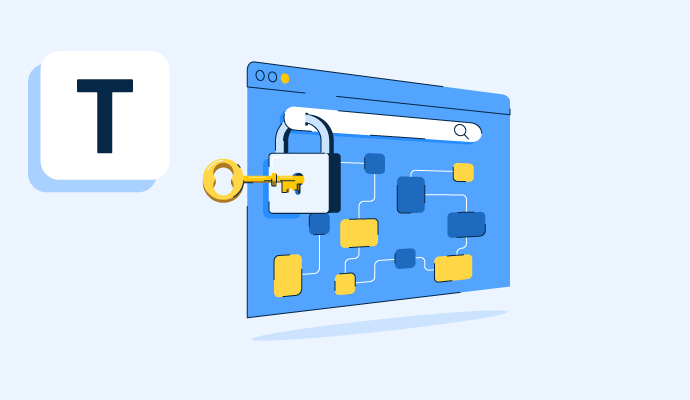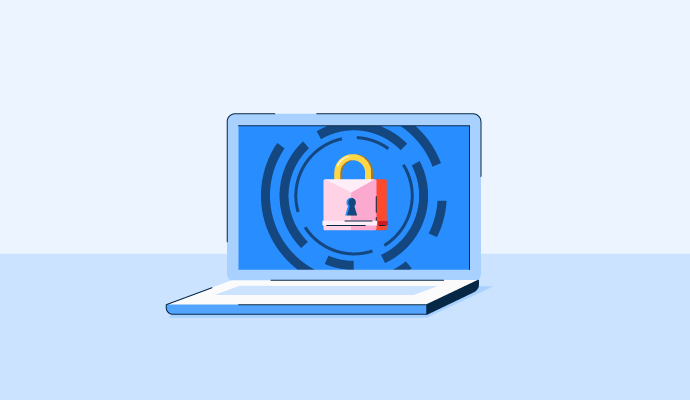What is transport layer security?
Transport layer security (TLS) is a cryptographic protocol that keeps end-user internet browsing activity private.
It provides communications security at the transport layer, which is a part of the Open Systems Interconnection (OSI) conceptual model.
Securing the transferring data packets at the transfer level of the OSI prevents bad actors from learning what information is transmitted between clients and servers.
This information can include personally identifiable information (PII) such as financial account numbers, credit card numbers, government-issued ID numbers, and other sensitive information such as passwords and personal correspondence.
TLS is usually referred to in the context of TLS Certificates. Certificate authorities issue TLS certificates, which are then used to authenticate a domain requesting data. If the server accepts this certificate, the data is encrypted using the client’s public key, transferred to the client, and decrypted using the client’s private key.
This process is called a TLS handshake. Companies use SSL & TLS certificates software to ensure their website provides visitors with encrypted, private browsing.
Benefits of using transport layer security
Transport layer security is a crucial process in keeping end-user data secure, which includes the following benefits:
- Privacy: The public key infrastructure (PKI) utilized to implement TLS is essential for keeping information encrypted and confidential.
- Authenticity: Certificates issued from verified certificate authorities ensure a domain is what it claims to be. Encrypting information between a client and an authenticated server ensures sensitive information stays out of the hands of bad actors.
- Integrity: TLS ensures that data has not been compromised, including whether or not the information is fraudulent or has been altered.
Basic elements of transport layer security
Transport layer security will include the following elements:
- Certificates: TLS is frequently referred to in the context of a TLS Certificate. Recognized and trusted certificate authorities issue these certificates, which authenticate the domains requesting data.
- Encryption: To keep information secure, TLS relies on encryption. The PKI process used to encrypt information is called a TLS handshake.
Transport layer security best practices
To make the most of transport layer security, follow these best practices:
- Maintain certificates: If an organization has been issued a TLS certificate for their operations, including websites that collect PII or personal information, including credit card numbers for online transactions, it is imperative to ensure that the certificates do not expire. Certificate lifecycle management software is designed to help certificate holders track expiration dates to avoid gaps in TLS certificates.
- Check connections: When browsing the internet, check the connection before inputting personal or sensitive information on a website. This can include company correspondence, company credit card numbers, and more. To ensure the connection is secure, look for a padlock icon in the web browser’s address bar. This icon means the connection is secured with encrypted data transfer.
Transport layer security vs. secure sockets layer
TLS is the successor to secure socket layer (SSL) cryptography. The two terms are closely related and often used interchangeably, primarily when referring to certificates issued from certificate authorities, but they are distinct.
- Secure sockets layer (SSL): The first publicly-available version of SSL debuted in 1995. Netscape, a now-defunct internet browser, developed SSL so its end-users could securely browse the early internet. SSL 3.0, the encryption protocol’s final version, was launched in 1996 and officially deprecated in 2015. Modern web browsers no longer accept SSL certificates due to their known vulnerabilities.
- Transport layer security (TLS): TLS is the successor to SSL and is the most widely-used encryption protocol employed between servers and clients. It is the most secure and trusted global data transfer protocol recognized by governing bodies and certificate authorities today. TLS was first launched in 1999 and effectively replaced SSL by 2015.
When browsing the internet, users should be aware of their connection status at all times. Browsing the internet with secured connections protected through TLS encryption protocol ensures that sensitive information and PII are kept from malicious actors. Before sharing any information on the internet, including personal correspondence, check for the padlock symbol in the address bar to easily and quickly check the security connection of that particular website.
Learn more about ensuring security at a faster pace with symmetric encryption.

Brandon Summers-Miller
Brandon is a Senior Research Analyst at G2 specializing in security and data privacy. Before joining G2, Brandon worked as a freelance journalist and copywriter focused on food and beverage, LGBTQIA+ culture, and the tech industry. As an analyst, Brandon is committed to helping buyers identify products that protect and secure their data in an increasingly complex digital world. When he isn’t researching, Brandon enjoys hiking, gardening, reading, and writing about food.

